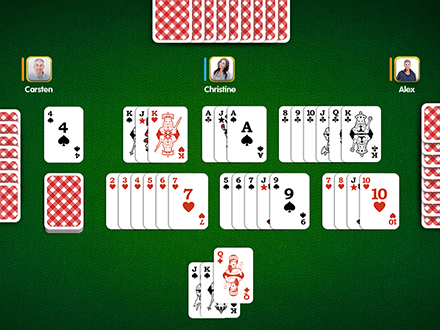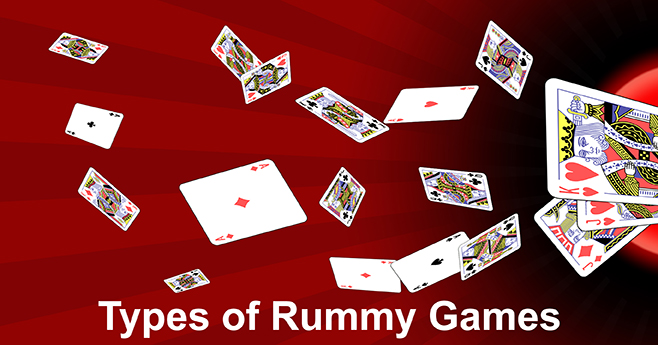- Rules For International Rummy Card Game
- How Do You Play International Rummy
- International Rummy Card Game Rules
If you're new to the game of Rummy, you should probably start with the General Rules of Rummy Games, which provides a few of the basic rules common to all Rummy games. Gin Rummy It is a two-player game that reached its peak of popularity during World War II, when it became a national fad, famous as the game for movie stars and Hollywood players. Since Continental Rummy is a game winnable based on the fewest points, you get 5 points for cards from 2–9. 10 and face cards count as 10 points. Aces are 20 points and Jokers are 50.
Rummy is a family of card games with many variations that make it one of the most well-known and commonly played card games. Rummy games are built on a straightforward mechanism and a straightforward game piece. The goal is to shape sets of three or four cards of the same rank or sequences of three or more cards of the same suit by drawing cards from a stockpile and discarding unwanted cards from the hand to a wastepile, from which cards can also be drawn later. Melds are the name for certain variations. Deadwood refers to all cards in a player's hand that hasn't been melded at the end of the game. Deadwood counts as a penalty.
Rummy family
While some Oriental tile and card games, such as Chinese mah-jongg and Japanese hanafuda, foreshadow the basic pattern of rummy, the oldest Western example of a rummy game is the 19th-century Mexican game of conquian, and Latin America has always created the keenest players and most creative rummy game developers. The name rummy, which was derived from the word rhum, first appeared in the early 1900s and has since become a common term for the whole race. In the first half of the twentieth century, rummy games exploded in popularity and growth, resulting in the increasingly complex collaboration game of canasta in the 1950s.
As a result of this exponential evolution, there are now a bewildering number of casual games with a bewildering number of interchangeable rules and titles. Any kind of simple rummy played with 104 cards (a doubled pack) plus jokers is known as kalookie (variously spelt). The rummy family can be classified into two categories: positive and negative. Players only score negative points for deadwood in negative games-the earlier branch-and melds aren't worth much, so the aim is to get out as quickly as possible. Since melds bear plus scores in positive games, the primary goal is to meld as much as possible while delaying moving out until it is more profitable.
Rummy for real money
People are not just playing rummy to make they also play Rummy for real money. People from all over the world are using the internet to play rummy for real money. People nowadays play rummy not only for fun but also to make some decent money. They are concentrating their efforts on rummy games to improve their odds of winning.

Conquian is an example of a flat-out game (the oldest type). There are no melds unveiled until anyone heads out by melding their whole hand at once. In this way, these games are similar to 'going-out' games like mad eights.
Rules For International Rummy Card Game

Games of a high level of difficulty, such as gin rummy. No melds are announced before someone believes he has the least number of deadwood and finishes the game by knocking (i.e., rapping on the table or verbally signalling the plan to end the hand).
Rummy and kalookie are two examples of drift-out games. If the game continues, more melds are discovered, and the game ends when someone runs out of cards.

Contract games, such as contract rummy, are a type of contract game. Each player's first meld in each deal must follow a contractual pattern (the 'bill'), and the rule becomes more stringent as more deals are completed.
Games involving rearrangement, such as vatikan, are common (and the propriety tile game Rummikub). Melds are a popular property that allows anyone to stretch and rearrange constituent cards to shape various melds as the game continues.
Canasta and its relatives are positive-scoring games, as opposed to the negative-scoring games mentioned above.
Rules
Rummy, as we know it today, dates back to the early 1900s when it was known by names like cooncan, Khun khan, and colonel. The following rules are common, but they are subject to local differences because players also adapt features from other games of the same genre into their own.
How Do You Play International Rummy
One or two 52-card decks are used, depending on the number of players; two or three jokers per deck can be added. The following is the order in which cards are dealt based on the number of players: Two players each receive ten cards from a single deck (52 cards plus optional jokers), three players each receive seven or ten cards from a single deck, four to five players each receive seven cards from a single deck, and four to seven players each receive ten cards from a double deck (104 cards plus optional jokers). The stock is formed by stacking the undealt cards facedown, and the wastepile, or discard pile, is started by turning up the next card.
With or without a final discard, the aim is to go out first by melding all of one's cards. Sets and suit sequences of three or more cards are valid melds. A-2-3 is the shortest sequence, and J-Q-K is the longest. (Many people now count an ace high or low but not both, so A-2-3 and Q-K-A are allowed but not K-A-2.)
International Rummy Card Game Rules
Tags:, English